Keep ghost students out with Application Fraud Firewall.
Our fraud models analyze admissions, financial aid, and enrollment data alongside extensive public records data to identify fraud with precision and accuracy, dramatically reducing processing times and manual reviews. Real students get in, ghost students stay out.

Helping higher education institutions understand
and use their data to make better decisions.
Colleges and universities are charged with increasing accountability for student outcomes, while demonstrating value in the face of rising costs and student debt. Data-savvy institutions confront these challenges with targeted strategies supported by analytics.
Our focus is helping our higher education clients develop a clear line-of-sight between their strategic goals and day-to-day operations. We design and build customized analytics platforms to support data visualization, forecasting, and data informed decision making. Plus, we understand the importance that institutional culture and business processes play in the success of your analytics strategy.

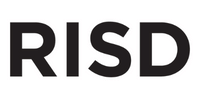
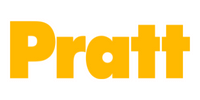
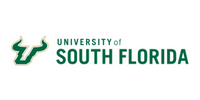
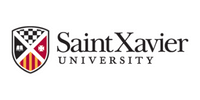
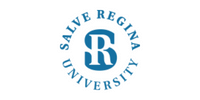
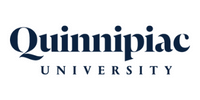

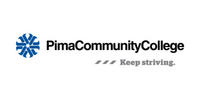


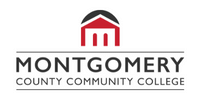


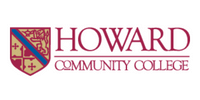
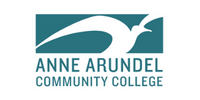

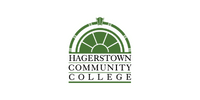
Higher Ed Success Stories & Insights
Student Success Analytics
Voyatek’s SSA Cloud analytics solution supports your targeted strategies with on-demand analytics that deliver accurate insights for real-time decision making. SSA Cloud brings together all of your institution’s data to create a more complete picture of the student lifecycle and institutional health.
With both a strategic view for administrators, and an operational view for departments, SSA Cloud’s dashboards help you focus enrollment management initiatives, advance equity in student success, and monitor institutional health. Our solution also reduces the burden on IT by supporting automation of analysis and data integration in a stable and reliable infrastructure.
Fraud Detection
Application fraud has been steadily increasing since 2020—when the rapid pivot to online classes made it easier for fraudulent admissions and financial aid applications to fly under the radar—and shows no signs of slowing down. Beyond the financial consequences, fraudulent applications create more work for staff, delay application processing, and tie up seats in courses.
To safeguard our clients’ institutional assets and student funding, we created the Application Fraud Firewall—a cloud-based, adaptive AI solution. This innovative tool proactively evaluates student applications by utilizing a wide range of public and private data sources, enabling institutions to identify and track potentially fraudulent aid applications before any funds are allocated to scammers.
Our continuously evolving fraud detection model was developed to keep pace with the ever-changing fraud schemes. By utilizing a machine learning algorithm, the model incorporates multiple variables, including application origin and student contact information, to flag potentially fraudulent aid applications. The dashboards optimize institutional awards to eligible applicants; identify FA applicants who are missing key documentation and help nudge them toward file completion; and identify fraudulent applications to ensure that funding is provided to real students with need.
Another reason our solution is so powerful is Voyatek’s integration of Socure’s cutting-edge digital identity verification and fraud prevention capabilities into Application Fraud Firewall. This integration significantly enhances the detection and prevention of fraud in admissions, financial aid, and enrollment processes.
Protecting your Institution’s Reputation and Resources
- A Holistic Approach
Application Fraud Firewall consolidates data from on-premise and cloud-based systems, including admissions CRM, SIS, and LMS, then uses adaptive AI to identify potentially fraudulent applications and actions in real time. - Designed for Higher Education
Developed by a team with decades of experience in higher education, the platform uncovers red flags that generic solutions might miss assessing applicant-specific data points like high school location, graduation dates, fully online enrollment, previously earned credits, and more. - Adaptable and Scalable
Application Fraud Firewall’s algorithms continuously learn and adapt, enabling institutions to stay ahead of emerging fraud tactics.
Learn more about why Application Fraud Firewall is a better fraud detection solution for administrators, staff, and students.
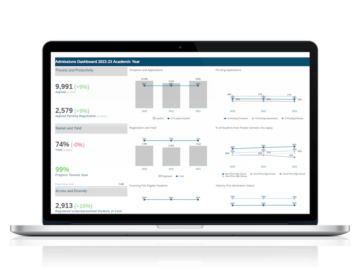
Admissions and Enrollment
Admissions and enrollment are key factors that drive institutional revenue and annual budgets. This area of analysis provides a comparison of applicants’ progress through the admissions funnel; enrollment counts; and change across multiple student demographic and academic attributes. Longitudinal analysis is provided for comparison of an entry cohort or other specifically defined cohorts over time. Our robust data model is designed to support analysis and forecasting to address these business questions and more:
- How many applicants and enrollments did we have at this point in time last year? Based on previous years, what can we expect to achieve this year? How do we identify declining enrollment trends so we can take action?
- What is our projected tuition revenue based on admissions and enrollment projections? What are the trends in revenue segmentation?
- What is our yield rate and is it changing by target market segment or recruiting strategy?
- Are recruiting and marketing events working and which ones have greater impact on yield than others?
- What is our feeder school market share and is it changing from our goals?
Financial Aid
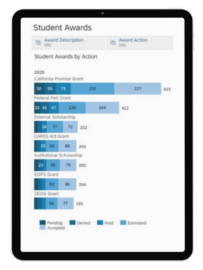 We’ve developed financial aid dashboards that focus on key metrics to support student-centered funding, target awarding efforts, and improve access and affordability for diverse student populations. This cloud-based solution presents insights into operational and strategic outcomes for managing FA applications, awarding aid, and enhancing analysis of special populations to identify unmet need. This comprehensive approach to financial aid data and analysis was developed by request from college financial aid directors and their teams.
We’ve developed financial aid dashboards that focus on key metrics to support student-centered funding, target awarding efforts, and improve access and affordability for diverse student populations. This cloud-based solution presents insights into operational and strategic outcomes for managing FA applications, awarding aid, and enhancing analysis of special populations to identify unmet need. This comprehensive approach to financial aid data and analysis was developed by request from college financial aid directors and their teams.
Use cases include:
- Target outreach to students based on specific attributes, processing statuses, and awards
- Drill to student and award detail for identified populations
- Analyze application trends to inform staffing needs and monitor progress toward goals
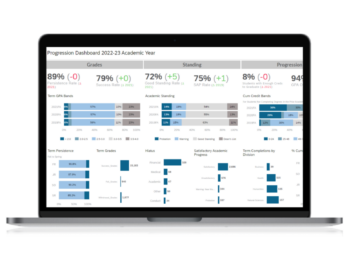
Retention and Completion
The SSA Retention and Completion module helps you track student degree progress, graduation, and transfer patterns. It streamlines regulatory reporting and integrates data from third-party systems such as National Student Clearinghouse, learning management systems, and early alert, among others. It addresses business questions such as:
- Which programs appear to contribute to or impede student success? Where are the bottlenecks and chokepoints for students in particular programs?
- What are our retention rates, and who are our at-risk students?
- Where do students transfer? Attend graduate school?
- What are our trends in credit momentum? What percentage of students are completing 15 credits in their first term, and 30 credits in their first year?
- What courses are students using to satisfy general education courses? What remaining coursework do students have to complete, and how can we use this to forecast demand and drive course offerings?
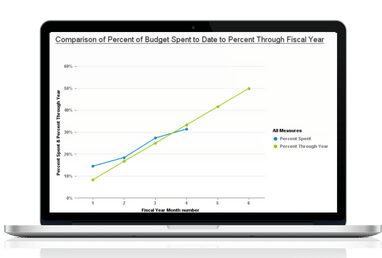
Finance
Understanding the state of finances is critical to the health of the institution. SSA Finance Analytics provides general ledger and purchasing information with current balances compared to budget, committed outlay, and comparisons to prior month and year periods to help you gain insights into specific departmental budgets or expense categories and identify spending patterns. This data is used to address business questions such as:
- What is the trend in budget to actual expenditures with year-over-year comparison of variance? Are we on track to be within budget for the current fiscal year?
- Where do we have opportunities to streamline purchases or combine spending into larger bulk orders, to negotiate lower prices and save money?
- What is the trend in bad debt over the last five fiscal years? What are the sources of bad debt?
- What reports do we need to prepare for auditors, such as registration charges, tuition rate tables, total payments to vendors, check registers, and PO statuses?

Human Resources
SSA Human Resources organizes position, wage, and benefits information to provide a clear picture of year-over-year employee data, including demographics, position classes, employee expenditures, and retention and turnover rates. This module simplifies the process of identifying active employees over time, allowing you to automate operational and strategic reports to address business questions such as:
- How are employee demographics changing over time? Do they reflect the demographics of our student body and community?
- What are our employee retention, turnover, and retirement rates by fiscal year, academic year, and month to month? Could any of these affect our ability to deliver the academic and student services necessary to achieve our goals?
- What is our expenditure rate by employee category or by individual employee?
- Which employees are at risk of leaving and what factors should be prioritized for employee retention efforts?
Guided Pathways
There is no “one size fits all” solution for colleges implementing Guided Pathways.
Your student population, organizational culture, and information systems are all unique. Our methodology and approach to Guided Pathways leverage the technology and data that you already have in place to better understand your students’ success and risk factors. This perspective reduces implementation time and cost and minimizes the learning curve for faculty and staff, so they can focus on serving your students.
Our custom data models and depth of experience integrating and applying data provide the information you need to:
- discover the driving forces and goals behind your institution’s commitment to Guided Pathways
- align academic and co-curricular programs with economic opportunities and student needs
- guide students toward resources that will ensure their success, and provide advisors with leading indicators to help monitor students and keep them on path, e.g. developmental education placement, enrollment, credit momentum, and completion rates
- inform advisors with leading indicators and measure the success advising processes and intervention initiatives
- analyze LMS outcomes for mastery of core general education competencies
- Application Fraud Firewall
-
Fraud Detection
Application fraud has been steadily increasing since 2020—when the rapid pivot to online classes made it easier for fraudulent admissions and financial aid applications to fly under the radar—and shows no signs of slowing down. Beyond the financial consequences, fraudulent applications create more work for staff, delay application processing, and tie up seats in courses.
To safeguard our clients’ institutional assets and student funding, we created the Application Fraud Firewall—a cloud-based, adaptive AI solution. This innovative tool proactively evaluates student applications by utilizing a wide range of public and private data sources, enabling institutions to identify and track potentially fraudulent aid applications before any funds are allocated to scammers.
Our continuously evolving fraud detection model was developed to keep pace with the ever-changing fraud schemes. By utilizing a machine learning algorithm, the model incorporates multiple variables, including application origin and student contact information, to flag potentially fraudulent aid applications. The dashboards optimize institutional awards to eligible applicants; identify FA applicants who are missing key documentation and help nudge them toward file completion; and identify fraudulent applications to ensure that funding is provided to real students with need.
Another reason our solution is so powerful is Voyatek’s integration of Socure’s cutting-edge digital identity verification and fraud prevention capabilities into Application Fraud Firewall. This integration significantly enhances the detection and prevention of fraud in admissions, financial aid, and enrollment processes.
Protecting your Institution’s Reputation and Resources
- A Holistic Approach
Application Fraud Firewall consolidates data from on-premise and cloud-based systems, including admissions CRM, SIS, and LMS, then uses adaptive AI to identify potentially fraudulent applications and actions in real time. - Designed for Higher Education
Developed by a team with decades of experience in higher education, the platform uncovers red flags that generic solutions might miss assessing applicant-specific data points like high school location, graduation dates, fully online enrollment, previously earned credits, and more. - Adaptable and Scalable
Application Fraud Firewall’s algorithms continuously learn and adapt, enabling institutions to stay ahead of emerging fraud tactics.
Learn more about why Application Fraud Firewall is a better fraud detection solution for administrators, staff, and students.
- A Holistic Approach
- Admissions & Enrollment
-

Admissions and Enrollment
Admissions and enrollment are key factors that drive institutional revenue and annual budgets. This area of analysis provides a comparison of applicants’ progress through the admissions funnel; enrollment counts; and change across multiple student demographic and academic attributes. Longitudinal analysis is provided for comparison of an entry cohort or other specifically defined cohorts over time. Our robust data model is designed to support analysis and forecasting to address these business questions and more:
- How many applicants and enrollments did we have at this point in time last year? Based on previous years, what can we expect to achieve this year? How do we identify declining enrollment trends so we can take action?
- What is our projected tuition revenue based on admissions and enrollment projections? What are the trends in revenue segmentation?
- What is our yield rate and is it changing by target market segment or recruiting strategy?
- Are recruiting and marketing events working and which ones have greater impact on yield than others?
- What is our feeder school market share and is it changing from our goals?
- Financial Aid
-
Financial Aid
 We’ve developed financial aid dashboards that focus on key metrics to support student-centered funding, target awarding efforts, and improve access and affordability for diverse student populations. This cloud-based solution presents insights into operational and strategic outcomes for managing FA applications, awarding aid, and enhancing analysis of special populations to identify unmet need. This comprehensive approach to financial aid data and analysis was developed by request from college financial aid directors and their teams.
We’ve developed financial aid dashboards that focus on key metrics to support student-centered funding, target awarding efforts, and improve access and affordability for diverse student populations. This cloud-based solution presents insights into operational and strategic outcomes for managing FA applications, awarding aid, and enhancing analysis of special populations to identify unmet need. This comprehensive approach to financial aid data and analysis was developed by request from college financial aid directors and their teams.Use cases include:
- Target outreach to students based on specific attributes, processing statuses, and awards
- Drill to student and award detail for identified populations
- Analyze application trends to inform staffing needs and monitor progress toward goals
- Retention & Completion
-

Retention and Completion
The SSA Retention and Completion module helps you track student degree progress, graduation, and transfer patterns. It streamlines regulatory reporting and integrates data from third-party systems such as National Student Clearinghouse, learning management systems, and early alert, among others. It addresses business questions such as:
- Which programs appear to contribute to or impede student success? Where are the bottlenecks and chokepoints for students in particular programs?
- What are our retention rates, and who are our at-risk students?
- Where do students transfer? Attend graduate school?
- What are our trends in credit momentum? What percentage of students are completing 15 credits in their first term, and 30 credits in their first year?
- What courses are students using to satisfy general education courses? What remaining coursework do students have to complete, and how can we use this to forecast demand and drive course offerings?
- Finance
-

Finance
Understanding the state of finances is critical to the health of the institution. SSA Finance Analytics provides general ledger and purchasing information with current balances compared to budget, committed outlay, and comparisons to prior month and year periods to help you gain insights into specific departmental budgets or expense categories and identify spending patterns. This data is used to address business questions such as:
- What is the trend in budget to actual expenditures with year-over-year comparison of variance? Are we on track to be within budget for the current fiscal year?
- Where do we have opportunities to streamline purchases or combine spending into larger bulk orders, to negotiate lower prices and save money?
- What is the trend in bad debt over the last five fiscal years? What are the sources of bad debt?
- What reports do we need to prepare for auditors, such as registration charges, tuition rate tables, total payments to vendors, check registers, and PO statuses?
- Human Resources
-

Human Resources
SSA Human Resources organizes position, wage, and benefits information to provide a clear picture of year-over-year employee data, including demographics, position classes, employee expenditures, and retention and turnover rates. This module simplifies the process of identifying active employees over time, allowing you to automate operational and strategic reports to address business questions such as:
- How are employee demographics changing over time? Do they reflect the demographics of our student body and community?
- What are our employee retention, turnover, and retirement rates by fiscal year, academic year, and month to month? Could any of these affect our ability to deliver the academic and student services necessary to achieve our goals?
- What is our expenditure rate by employee category or by individual employee?
- Which employees are at risk of leaving and what factors should be prioritized for employee retention efforts?
- Guided Pathways
-
Guided Pathways
There is no “one size fits all” solution for colleges implementing Guided Pathways.
Your student population, organizational culture, and information systems are all unique. Our methodology and approach to Guided Pathways leverage the technology and data that you already have in place to better understand your students’ success and risk factors. This perspective reduces implementation time and cost and minimizes the learning curve for faculty and staff, so they can focus on serving your students.
Our custom data models and depth of experience integrating and applying data provide the information you need to:
- discover the driving forces and goals behind your institution’s commitment to Guided Pathways
- align academic and co-curricular programs with economic opportunities and student needs
- guide students toward resources that will ensure their success, and provide advisors with leading indicators to help monitor students and keep them on path, e.g. developmental education placement, enrollment, credit momentum, and completion rates
- inform advisors with leading indicators and measure the success advising processes and intervention initiatives
- analyze LMS outcomes for mastery of core general education competencies







